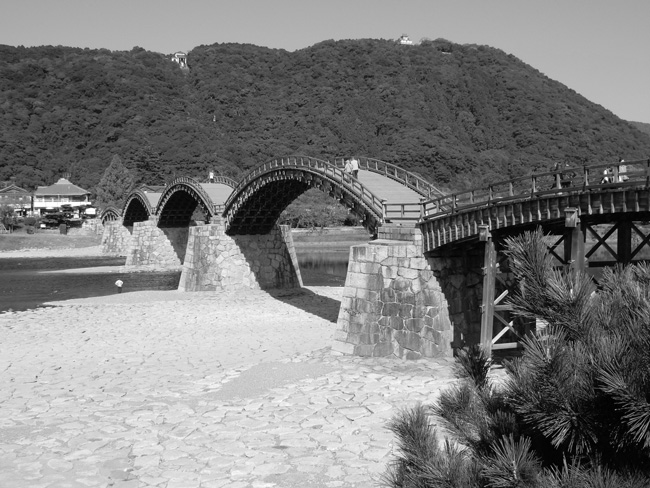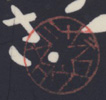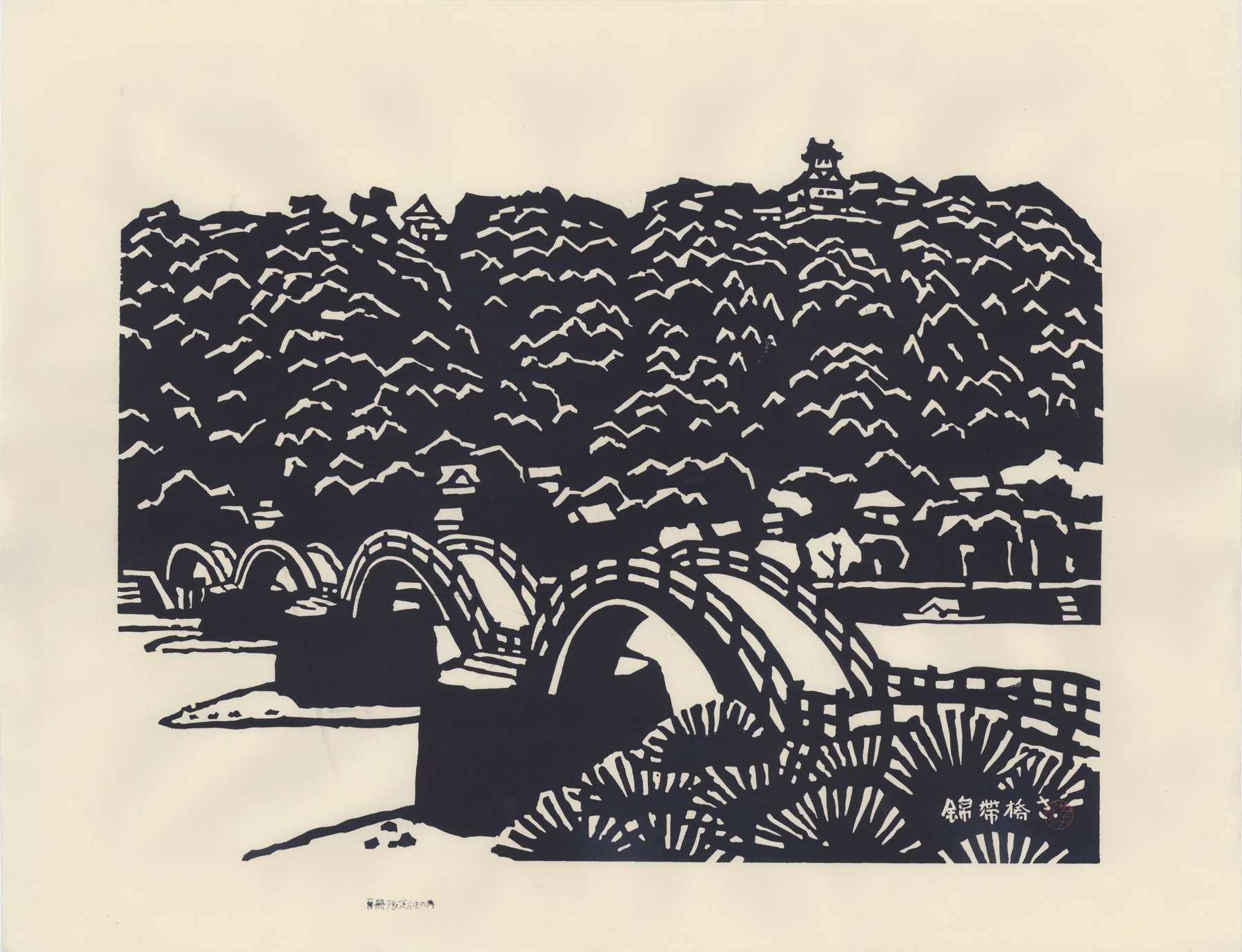About This Print
Miyata depicts, using black ink only, 500 year old Kintai-bashi, a wooden arch bridge, below Iwakuni Castle in Yamaguchi Prefecture. This print is from an unknown volume from the artist's 240 print, 12 volume compendium Miyata Saburō Collection of Woodblock Prints Scenery of Japan.

About the Series "Miyata Saburō Collection of Woodblock Prints - Scenery of Japan"
Consisting of twelve volumes, each containing twenty woodblock prints depicting scenic locations around Japan, Miyata spent fourteen years from 1970 to 1984 producing the series, which he carved and printed himself in a limited edition of 100 prints each. Most, if not all, the places depicted were actually visited by the artist. Miyata followed this massive series of 240 prints with a printed compendium of the prints titled Miyata Saburō mokuhanga zenshū 宮田三郎木版画全集 (The Complete Woodblock Prints of Miyata Saburō), release in limited edition in five volumes in 1983-1984.
Print Details
| IHL Catalog | #2265 |
| Title |  Kintai bridge |
| Series | Miyata Saburō Collection of Woodblock Prints Scenery of Japan 宮田三郎木版画集―日本の風景 Miyata Saburō Mokuhanga shū Nihon no fūkei |
| Artist | Miyata Saburō (1924-2013) |
| Signature | none |
| Seal |  |
| Publication Date | 1971-1984 |
| Edition |  |
| Publisher | the artist in conjunction with the Tokyo Print Research Institute Tokyo Hanga Kenkyūsho 東京版画研究所 |
| Printer | self-printed |
| Impression | excellent |
| Colors | excellent |
| Condition | excellent - minor paper handling creases |
| Genre | sosaku-hanga (creative print) |
| Miscellaneous | |
| Format | dai-ōban |
| H x W Paper | 15 3/8 x 20 1/8 in. (38.7 x 51.1 cm) |
| H x W Image | 11 5/8 x 16 in. (31.1 x 40.6 cm) |
| Collections This Print | |
| Reference Literature |


